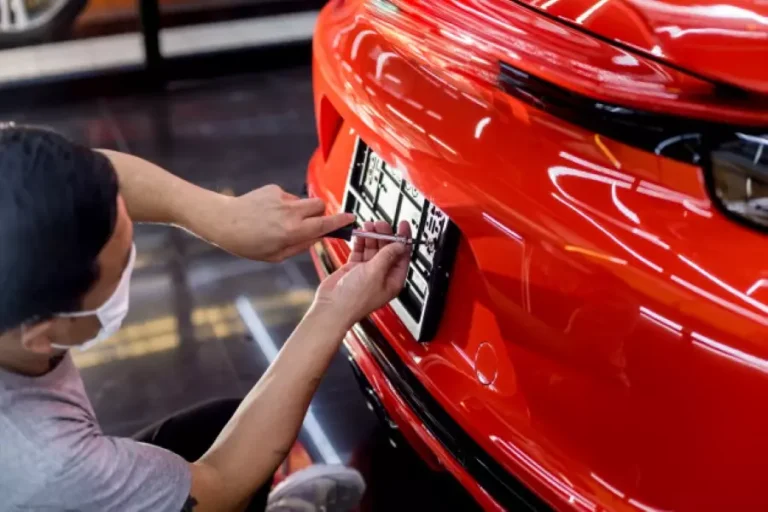Your car’s number plate, sometimes referred to as the number plate, serves as its identification, making it simpler to find. The official identification number is imprinted on a metal plate that is affixed to the front and rear of your car. Legal 4D number plates has raised characters that adhere to UK standards, making them easy to see and giving your car a sleek, contemporary look.
Although the numbers can appear random at first, each one has a distinct function. For instance, India’s official number plate number is made up of four components. In India, an indefinite licence plate that is only good for 20 days is given to the car owner before they may obtain a permanent licence plate. They have to go to the Regional Transport Office (RTO) in their district and formally register for a regular licence plate during this time.
Design And Material Of Number Plates
To ensure uniformity and readability, the UK has set precise requirements for number plate design and material. The Driver as well as Vehicle Licensing Agency (DVLA) mandates that all license plates be composed of reflective material. This guarantees that, when lighted by headlights, these structures are visible both during the day and at night. The background of the rear plate must be yellow, and the background of the plate at the front must be white. This feature makes it easier for security personnel as well as additional drivers to distinguish both the front and the rear of the car.
To improve legibility and establish a striking contrast with the shiny background, the characters on the plate must also be black. It is completely forbidden to use plates with unconventional colours or materials that are coloured or non-reflective.
Standard Character And Font Spacing
The UK requires all car number plates to have the same font style in order to prevent misunderstandings and guarantee reading. The Charles Wright font, particularly was created especially to guarantee distinct and uniform character shapes, must be utilised. Characters must also not be altered in any manner, including by being deformed or italicised.
Number Plate Regulations
Your car’s license plates have to:
- Be composed of a reflecting substance and show black lettering on a white front plate.
- Show black text on a yellow backdrop (back plate).
- Have a British Standard number, which is “BS AU 145e” for plates installed after September 1, 2021, and they do not have a backdrop pattern to indicate who provided the number on the plate.
- Neither detachable nor mirrored characters are allowed. Additionally, your licence plates are restricted to one particular colour of black if they were installed after September 1, 2021.
Additionally, your licence plates can:
- Have 3D (raised) characters show certain flags,
- Symbols, and identifiers;
- If your car is emission-free,
- Show a green flash.
Does The Gap Between Licence Plates Affect A MOT?
Of course. The same regulations that a Registered Number Plates Supplier must follow when producing plates will be followed by MOT Test Centers.
There are many more rules in place than merely space. When creating replacement registration plates, the protagonists used must adhere to certain measurements:
- Height of character: 79 mm
- Character width: 57 mm
- Character stroke: 14 mm
- 11 mm separates each character.
- 33 mm separates the two groupings.
- 19 mm separates vertical lines.
- Minimum side, top, and bottom margins: 11 mm
Accurately Displaying The Registration Mark
The combination of letters and digits that make up the registration mark must always be readable and easily observable. Number plates must not be obscured by snow, mud, or other objects that could impair vision, according to the regulations. Especially in bad weather, drivers should polish their licence plates on a regular basis to prevent the registration mark from becoming obscured.
Additionally, using any films or covers that change the plate’s appearance—like coloured or reflective covers—is forbidden by UK law. These can cause serious penalties and disrupt ANPR systems.
An Explanation Of Illegal Number Plates
If the car has been involved in a crime, the legally authorised keeper may face fines or even arrest if the licence plate suppliers fail to do the required checks and produce cloned numbers.
For instance, the registered (and legitimate) owner of the license plate will ultimately be the one who comes to pay the posted fee if a driver speeding with a cloned plate receives a parking penalty.
Final Words
Being punished for hiding your number plates may seem like a minor infraction, but in every state and territory, there are stringent regulations on number plate visibility that must be followed.
Visit blogpedia for more informative news.
